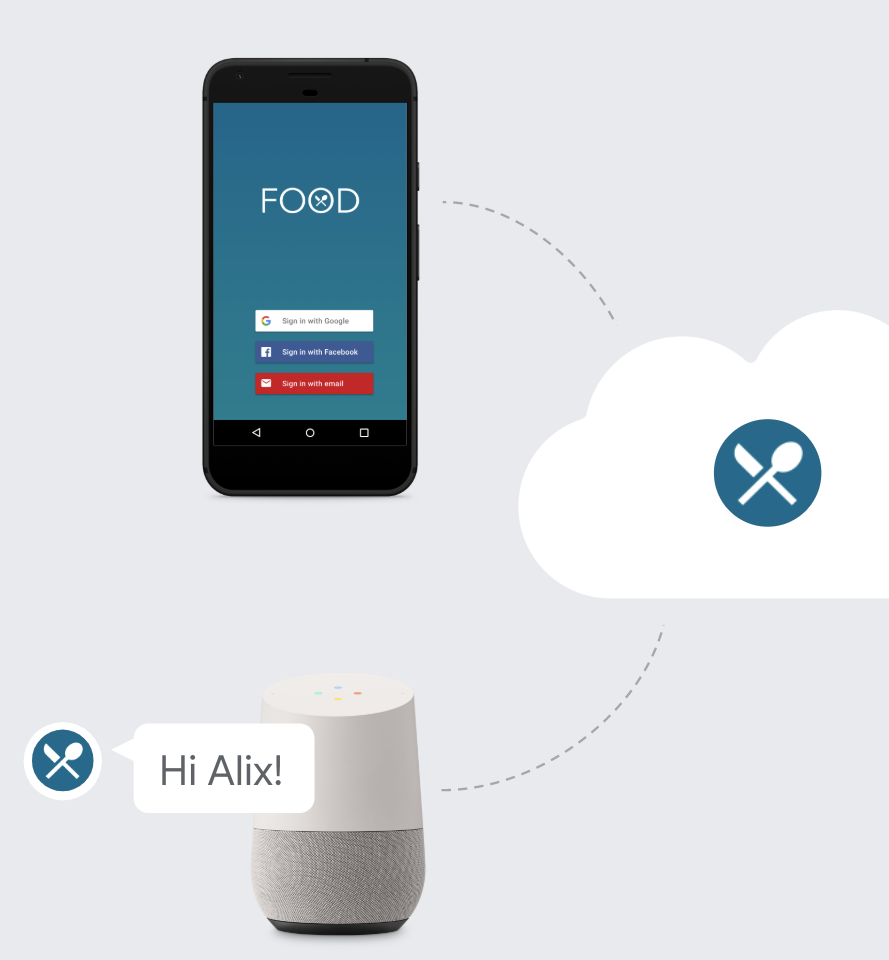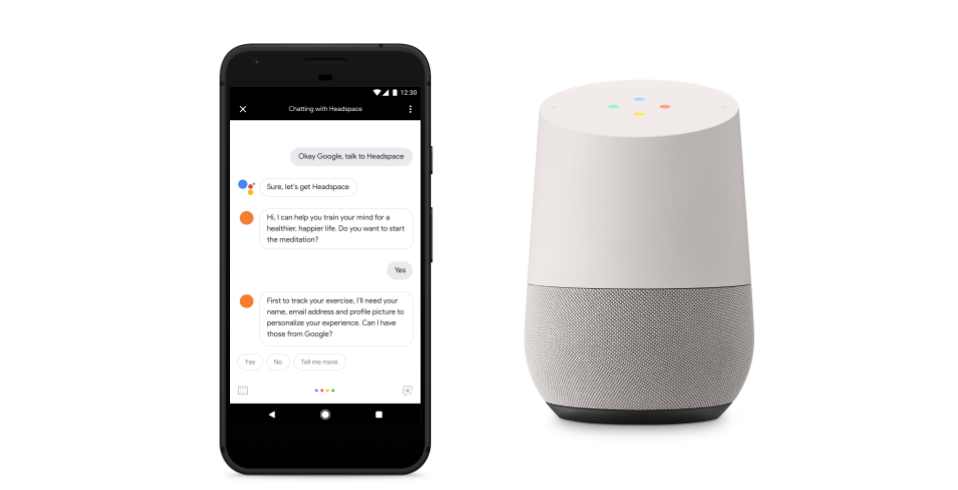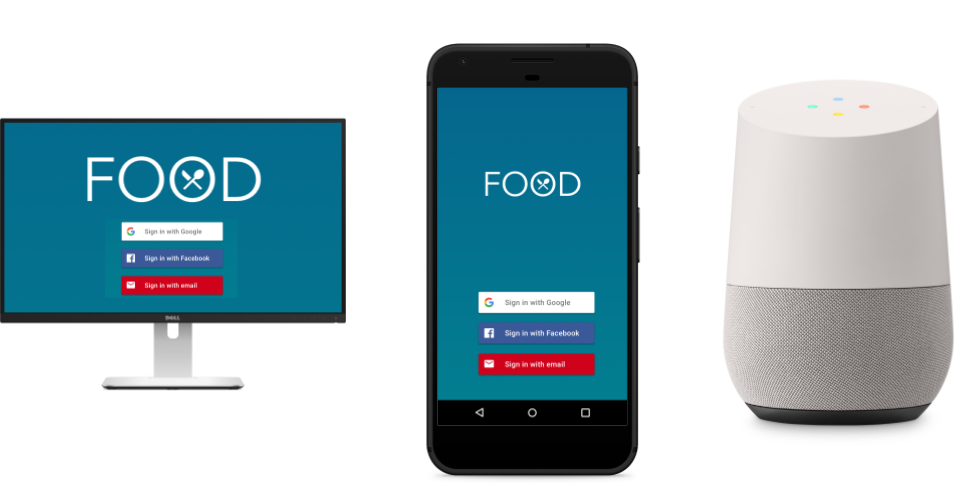Account linking
Use account linking to ask users if they want to connect their Google Account to your Action. This allows you to build richer, more personalized experiences for your users.

Overview
If your Action is a companion of existing apps on different platforms (e.g., the web or Android), you can use account linking to securely make users' preferences available to all platforms, which ensures a consistent cross-platform experience.
Account linking for Actions on Google uses Google Sign-In, Google's secure authentication system, and optionally, OAuth 2.0 (an industry-standard protocol for authorization).
Visit our developer site for more technical guidance.
Linking flow
When the Assistant matches a Google Account to a user, you can use account linking to ask for the user's permission to access that Google Account.
You can use the account data to:
- Find a match for the account in your authentication system (if the user has already used your Action or one of your apps on other platforms)
- Create a new account in your authentication system for a new user
The 3 linking methods
There are 3 methods for account linking:
- Google Sign-In
- OAuth and Google Sign-In
- OAuth
Google Sign-In
With Google Sign-In for the Assistant, your Action can request access to your user's Google profile during a conversation (which includes the user's name, email address, and profile picture). The user can complete the whole flow via voice, which provides a frictionless sign-in experience.

Use Google Sign-In if:
- Your Action(s) target only the Assistant
- You don't have an existing authentication system
- You have an existing authentication system and only want to link to users who signed up to your existing apps using their @gmail.com address
OAuth and Google Sign-In
The OAuth and Google Sign-In linking type adds Google Sign-In on top of OAuth based account linking. This provides seamless voice-based linking for Google users while also enabling account linking for users who registered to your service with a non-Google identity.
To use this flow, you need to extend one of the supported OAuth 2 standard flows to add support for Google proprietary extensions of the protocol.

Use OAuth and Google Sign-In if:
- You have multi-platform Actions
- You have an existing authentication system and you want to allow users to connect to non @gmail.com addresses
- You want to link accounts using Google profile information
- You need to create new accounts using the Google profile information (optional)
OAuth
The OAuth account linking type supports two industry standard OAuth 2.0 flows:
- Implicit code flows
- Authorization code flows
Using this flow is discouraged because it requires transferring the user interaction from voice to screen.
Consider using OAuth if:
You have an existing implementation of an OAuth 2 server, and you cannot extend the token exchange endpoint to add support for Google's protocols for automatic linking and account creation from an ID token. To learn more, see the OAuth developer guide.